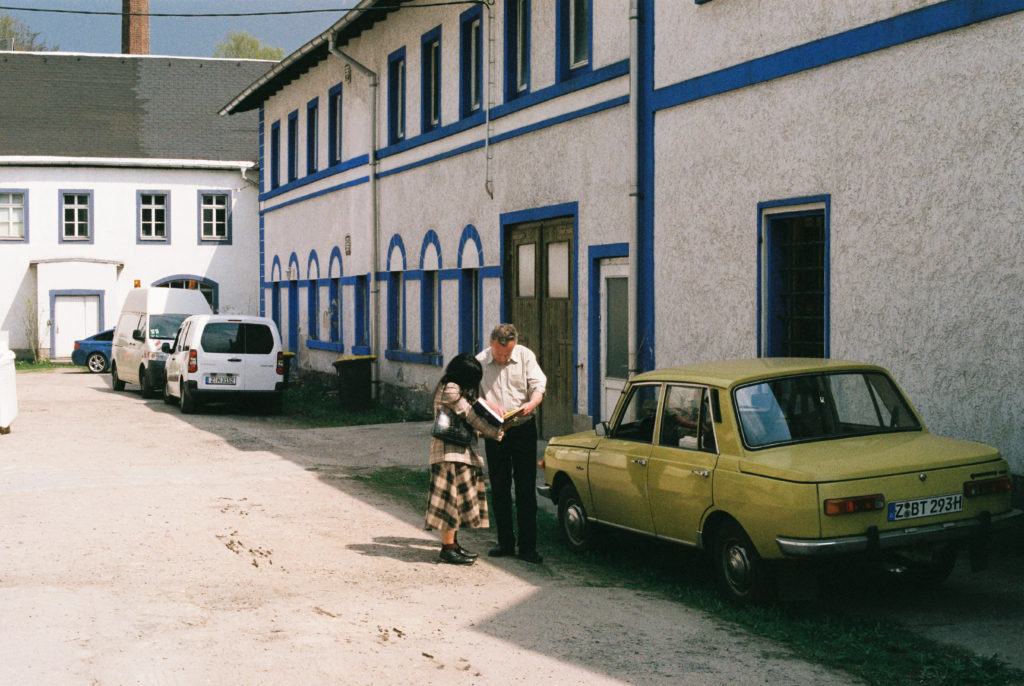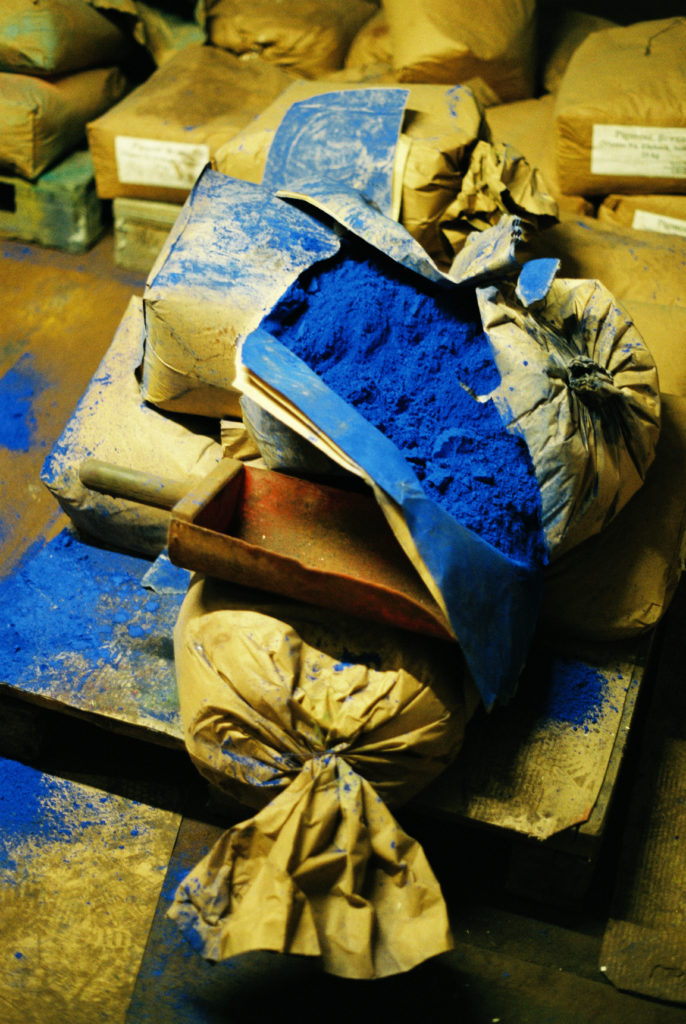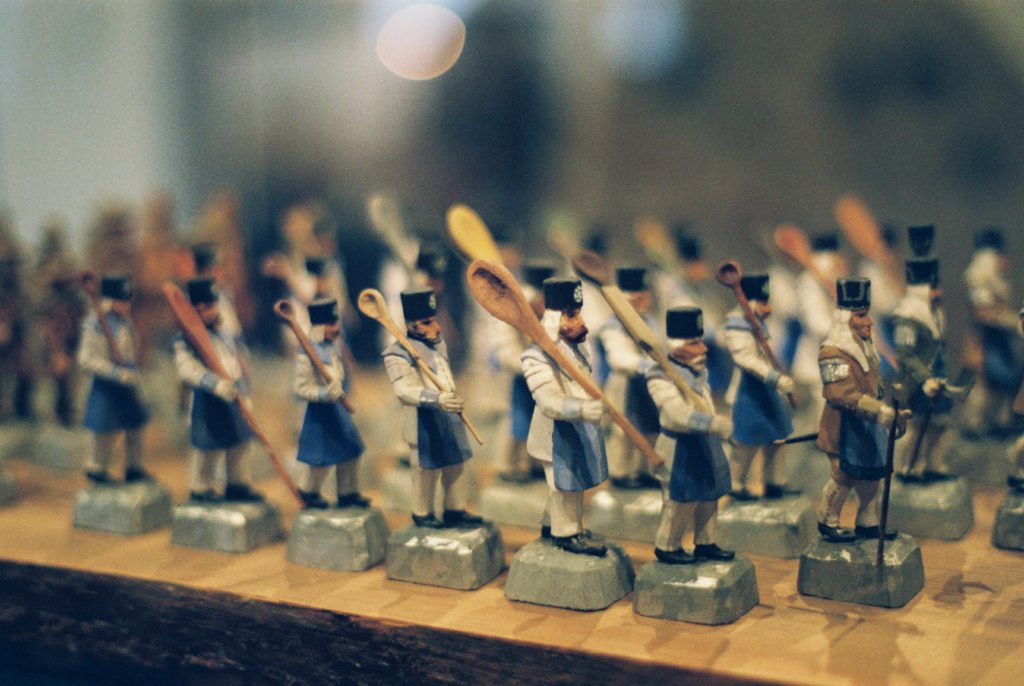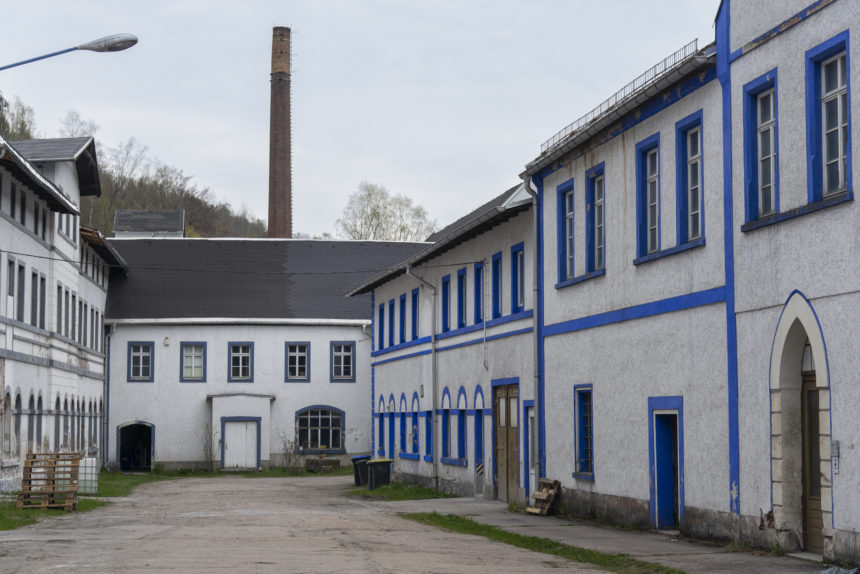Co-author Gözde Yildiz
The fascinating history of the blue pigment in the Ore Mountains is quite mysterious. Hence, all we knew at first was how we felt when we first saw the flashing blue colour hidden in the blue factory’s storage! We loved the moment we opened the box, and the blue colour was the very thing to which our desire clung.
We were lucky to discover how the cobalt-blue was extracted from the mineral through traditional process mining. And who would have imagined that this shiny and brilliant blue pigment derived from the purple raw material becomes blue after being fired in a certain way? Yet this prestigious cobalt-blue pigment has been exported in many countries causing the creation of various art pieces and cultures.Furthermore, the cobalt-blue factory is one of the most important industrial structures in the Ore Mountains and dominated Europe for a long time. So, to make yourself familiar with the blue dye production of Schneeberg, particularly with the cobalt-blue production and its transition to the ultramarine blue, grab a cup of coffee (or your favourite tea) and dive into the world of blue!
Short history of the blue dye production
Mining in Schneeberg and other places in Ore Mountains not only guides the landscape and the technology but also various numbers of art sectors in different geographies throughout the time. In fact, this unique mining landscape opened various industrial eras by bringing richness and wealth to many fields.
The Schneeberg mining landscape played an essential role in cobalt mining and blue dye production from the 17 th to the 19 th century and was the leading producer of blue pigments in Europe.
The mining town of Schneeberg was founded in response to silver ore mining, but the Baroque aesthetic the town has today is the result of cobalt ore mining. The most recent of the blue dye factories was the Schindlers Werk small works which Erasmus Schindler founded in Zschorlau in 1650.

The entire production complex was used for cobalt blue production. The manor house and the warehouse are two of Saxony’s oldest and most characteristic blue dye factory buildings. Essentially, cobalt blue pigment was shipped from Saxony worldwide and was essential for Meissen porcelain and other products.
From purplish to the blue pigment
The early history of mining started with the discovery of zinc, nickel and copper. The silver followed the previous ones used not only in the industrial processes via the necessary equipment making but also in art via decorative objects. It was discovered that cobalt in the Ore Mountains could be used to produce the blue pigment called cobalt-blue.

However, the milestone was accrued in the first half of the 18 th century when the former miners took advantage of the fake silver. The mineral cobalt was most probably derived from the German word “Kobold” which means house-breaker, gnome or unscrupulous rascal. The first mystery comes from the raw material before the processing stages. The former miners discovered that the cobalt was found in the silver and nickel deposits in Schneeberg, meaning those art pieces created by cobalt blue pigments originated from this place.
The cobalt ores have a silvery appearance, but when it interacts with the weather, it shows purple colour. It is such a mysterious thing that men could have known how to produce blue pigments from this purplish material back in history.
The story started with this fake silver mixture in Schneeberg, containing cobalt. The blue pigment was discovered by the former owners of the city, at least since the middle ages, during the smelting process of the silver. The former miners called it the ‘”silver robber’”. The city became an important industrial place for cobalt blue pigments through five active blue-collar factories. It is worth mentioning that the cobalt blue established in the 19th century was significantly improved from the one previously used.
Processing of cobalt-blue pigments and its transition to the ultramarine-blue
To begin the three-step production process of the cobalt-blue, workers had to find the cobalt ore base, which was not an easy task. The first phase was to distinguish the elements and minerals from the raw material to proceed. For example, arsenic – a very poisonous substance – was one of them! Then, they had to combine cobalt ore with other raw materials, heat it up, melt it, and pour it into the water. Colours of cobalt-blue were most often used on porcelain, tiles, and even laundry – to turn yellowish laundry white again.
This factory, which is the oldest paint factory, is still operating even though cobalt blue production stopped in 1860. In the same year, the blue cobalt production was replaced by the production of ultramarine blue since ultramarine was less expensive to produce and provided better results for colouring paper and laundry. Additionally, the ultramarine blue required less amount of colour than cobalt-blue, which took up a great deal of raw materials. There was something special about the ultramarine process. The reason lies in the fact that workers had to be trained for up to ten years to produce a quality ultramarine blue colour. All the mixed materials needed to be heated up for three days to 900 degrees. Workers controlled the temperature with a metal tool, but also with their eyes as optical measurement tools for this heating process. In other words, workers had to go through ten years of training to control the process by using their eyes as an optical device to calculate when and how to lower the temperature.
The ultramarine colour was used mainly for paints, as well as for internal and exterior wall paintings. However, ultramarine production stopped in 1996 because of environmental regulations.
Blue colour as representation of richness and wealth
Who would have imagined that this famous cobalt blue would become a representation of the wealth, richness, and pride of the Ore Mountains region? Interestingly, did you know that the blue pigments produced in Schneeberg were used to colour Venetian glasses, Portuguese tiles, some Chinese porcelains and ceramics, and Holland’s wares?
Blue exists in every piece in Schneeberg, and it represents the symbol of richness, wealth and being superior as well as pride. For example, when you check the traditional miners' costumes during their Christmas celebrations, the miners with blue pants were superior to the others hierarchically. Yet, they wanted to incorporate white colour into their costumes to demonstrate the ”whitest appearance” possible because the blue pigment was tough to remove from clothes. Their goal was to convey a clear message that the blue pigment was processed flawlessly by the workers.

The blue pigment produced in Schneeberg was used by artists in many countries. While for people living in that region, blue was something more, a sense of pride and rich history, for us too – the cobalt blue is not just a colour. It is a witnessing story of the technological mining advancement, living and working environment, as well as the culture and traditions of the Ore Mountains. In short, the blue dye production in Schneeberg is a symbol of remarkable events in the mining history, and perhaps, in us, someone very old still hears the mechanical sound of the process of heating the living pigment of the blue.
XXXXXXXXXXXXXXXXX